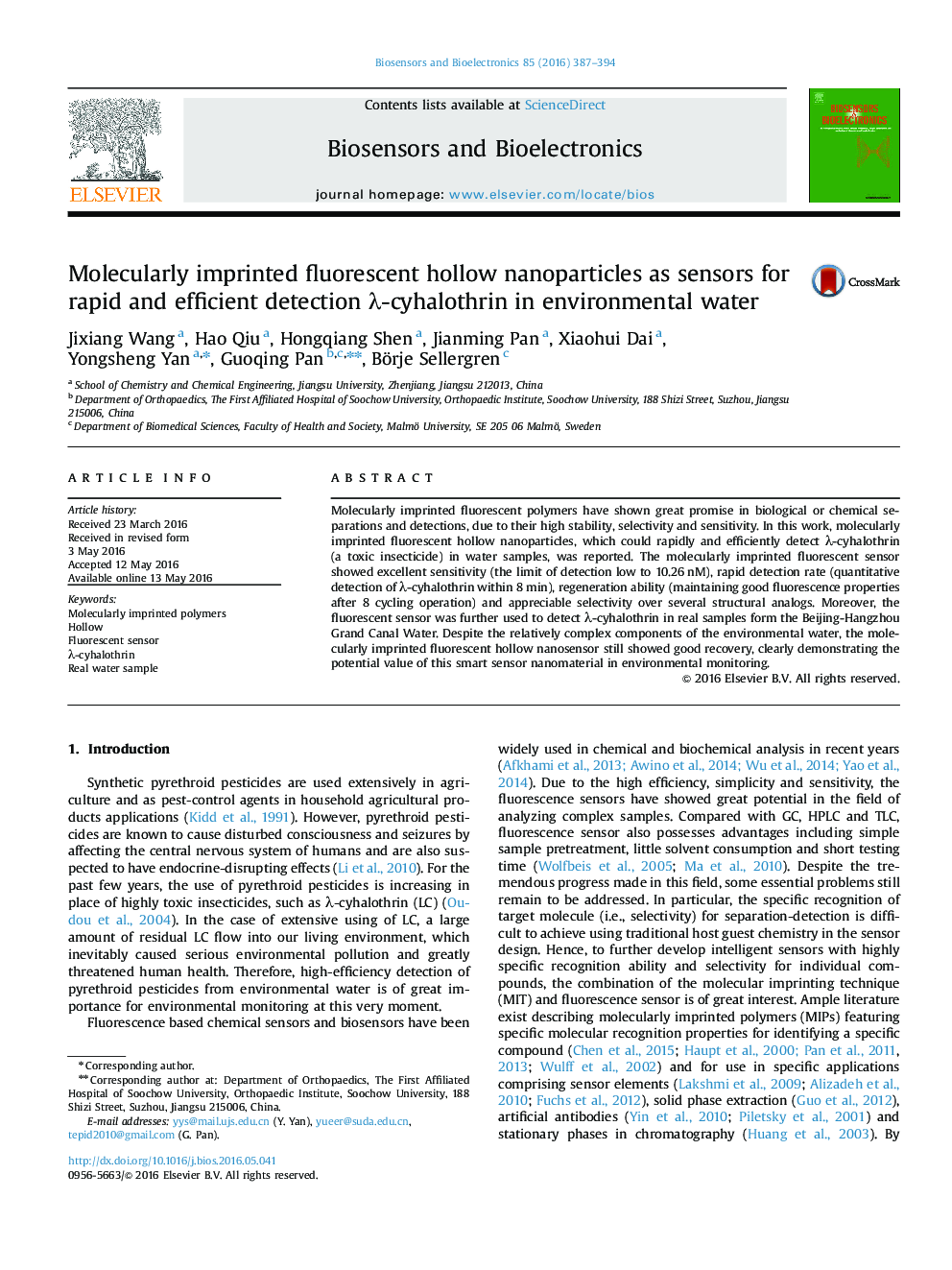| Article ID | Journal | Published Year | Pages | File Type |
|---|---|---|---|---|
| 7230428 | Biosensors and Bioelectronics | 2016 | 8 Pages |
Abstract
Molecularly imprinted fluorescent polymers have shown great promise in biological or chemical separations and detections, due to their high stability, selectivity and sensitivity. In this work, molecularly imprinted fluorescent hollow nanoparticles, which could rapidly and efficiently detect λ-cyhalothrin (a toxic insecticide) in water samples, was reported. The molecularly imprinted fluorescent sensor showed excellent sensitivity (the limit of detection low to 10.26 nM), rapid detection rate (quantitative detection of λ-cyhalothrin within 8 min), regeneration ability (maintaining good fluorescence properties after 8 cycling operation) and appreciable selectivity over several structural analogs. Moreover, the fluorescent sensor was further used to detect λ-cyhalothrin in real samples form the Beijing-Hangzhou Grand Canal Water. Despite the relatively complex components of the environmental water, the molecularly imprinted fluorescent hollow nanosensor still showed good recovery, clearly demonstrating the potential value of this smart sensor nanomaterial in environmental monitoring.
Related Topics
Physical Sciences and Engineering
Chemistry
Analytical Chemistry
Authors
Jixiang Wang, Hao Qiu, Hongqiang Shen, Jianming Pan, Xiaohui Dai, Yongsheng Yan, Guoqing Pan, Börje Sellergren,
